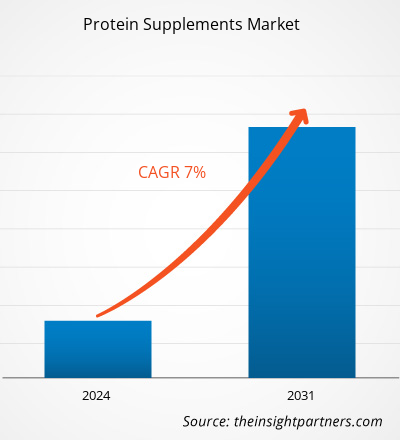Laboratory Ware Market Trends: Emerging Patterns in 2025
The Laboratory Ware Market is evolving as new trends emerge, including automation, digital integration, and sustainability. Laboratory consumables, including pipettes, centrifuge tubes, and glassware, are increasingly designed to meet ergonomic and environmental standards. Trends also indicate higher adoption in diagnostics, molecular research, and pharmaceutical testing.
Companies are increasingly leveraging technology to enhance operational efficiency, while the global demand for standardized labware supports consistent market trends. Learn more at Laboratory Ware Market trends
Get Full Reports:https://www.marketresearchfuture.com/reports/laboratory-ware-market-33442
Segment growth in the Laboratory Ware Market is evident in consumables, glassware, and plasticware sectors. High demand in molecular research, chemical testing, and pharmaceutical R&D fuels segment-specific expansion.
Technological integration and sustainable materials continue to drive segment growth. For more insights, visit Laboratory Ware Market Segment
Get Full Reports:https://www.marketresearchfuture.com/reports/laboratory-ware-market-33442
The Laboratory Ware Market trends reveal a steady shift towards automation, digital integration, and sustainability. Modern laboratories demand products that ensure high accuracy, durability, and compliance with strict safety standards. Laboratory ware manufacturers are investing in R&D to produce consumables and instruments compatible with automated workflows and IoT-enabled systems. The adoption of reusable and eco-friendly materials is gaining momentum, driven by environmental regulations and corporate sustainability goals. Additionally, the demand for laboratory ware in emerging research areas, such as regenerative medicine, diagnostics, and environmental testing, is growing, influencing design innovations and market dynamics.
FAQs:
Q1: What are the major trends in laboratory ware?
A1: Automation, smart instruments, sustainability, and ergonomic designs are key trends.
Q2: How do trends vary regionally?
A2: Developed markets focus on automation, while emerging markets adopt cost-effective and scalable solutions.
The Laboratory Ware Market is evolving as new trends emerge, including automation, digital integration, and sustainability. Laboratory consumables, including pipettes, centrifuge tubes, and glassware, are increasingly designed to meet ergonomic and environmental standards. Trends also indicate higher adoption in diagnostics, molecular research, and pharmaceutical testing.
Companies are increasingly leveraging technology to enhance operational efficiency, while the global demand for standardized labware supports consistent market trends. Learn more at Laboratory Ware Market trends
Get Full Reports:https://www.marketresearchfuture.com/reports/laboratory-ware-market-33442
Segment growth in the Laboratory Ware Market is evident in consumables, glassware, and plasticware sectors. High demand in molecular research, chemical testing, and pharmaceutical R&D fuels segment-specific expansion.
Technological integration and sustainable materials continue to drive segment growth. For more insights, visit Laboratory Ware Market Segment
Get Full Reports:https://www.marketresearchfuture.com/reports/laboratory-ware-market-33442
The Laboratory Ware Market trends reveal a steady shift towards automation, digital integration, and sustainability. Modern laboratories demand products that ensure high accuracy, durability, and compliance with strict safety standards. Laboratory ware manufacturers are investing in R&D to produce consumables and instruments compatible with automated workflows and IoT-enabled systems. The adoption of reusable and eco-friendly materials is gaining momentum, driven by environmental regulations and corporate sustainability goals. Additionally, the demand for laboratory ware in emerging research areas, such as regenerative medicine, diagnostics, and environmental testing, is growing, influencing design innovations and market dynamics.
FAQs:
Q1: What are the major trends in laboratory ware?
A1: Automation, smart instruments, sustainability, and ergonomic designs are key trends.
Q2: How do trends vary regionally?
A2: Developed markets focus on automation, while emerging markets adopt cost-effective and scalable solutions.
Laboratory Ware Market Trends: Emerging Patterns in 2025
The Laboratory Ware Market is evolving as new trends emerge, including automation, digital integration, and sustainability. Laboratory consumables, including pipettes, centrifuge tubes, and glassware, are increasingly designed to meet ergonomic and environmental standards. Trends also indicate higher adoption in diagnostics, molecular research, and pharmaceutical testing.
Companies are increasingly leveraging technology to enhance operational efficiency, while the global demand for standardized labware supports consistent market trends. Learn more at Laboratory Ware Market trends
Get Full Reports:https://www.marketresearchfuture.com/reports/laboratory-ware-market-33442
Segment growth in the Laboratory Ware Market is evident in consumables, glassware, and plasticware sectors. High demand in molecular research, chemical testing, and pharmaceutical R&D fuels segment-specific expansion.
Technological integration and sustainable materials continue to drive segment growth. For more insights, visit Laboratory Ware Market Segment
Get Full Reports:https://www.marketresearchfuture.com/reports/laboratory-ware-market-33442
The Laboratory Ware Market trends reveal a steady shift towards automation, digital integration, and sustainability. Modern laboratories demand products that ensure high accuracy, durability, and compliance with strict safety standards. Laboratory ware manufacturers are investing in R&D to produce consumables and instruments compatible with automated workflows and IoT-enabled systems. The adoption of reusable and eco-friendly materials is gaining momentum, driven by environmental regulations and corporate sustainability goals. Additionally, the demand for laboratory ware in emerging research areas, such as regenerative medicine, diagnostics, and environmental testing, is growing, influencing design innovations and market dynamics.
FAQs:
Q1: What are the major trends in laboratory ware?
A1: Automation, smart instruments, sustainability, and ergonomic designs are key trends.
Q2: How do trends vary regionally?
A2: Developed markets focus on automation, while emerging markets adopt cost-effective and scalable solutions.
0 Commentaires
0 Parts
581 Vue
0 Aperçu


